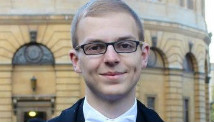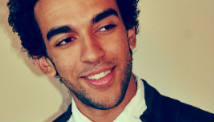TOKYO (Reuters) - The yen fell to its lowest level in more than two years on Friday, lifting Japanese stocks to 21-month highs on expectations of drastic monetary easing, while shares in the rest of Asia rose as Washington races to avoid a fiscal crisis.
U.S. President Barack Obama and lawmakers are launching a last round of budget talks before a New Year deadline to reach a deal or watch the economy go off a "fiscal cliff," that economists fear will push the United States back into recession and stamp out fragile signs of recovery elsewhere.
"A big issue is being made of it, but eventually they'll do something to kick the can down the road," said Steven Robinson, senior investment manager at Alleron Investment Management in Sydney.
European shares were seen flat to higher, with financial spreadbetters predicting London's FTSE 100 <.ftse>, Paris's CAC-40 <.fchi> and Frankfurt's DAX <.gdaxi> would open little changed to as much as 0.3 percent higher. U.S. stock futures suggested a steady Wall Street start. <.l><.eu><.n/>
MSCI's broadest index of Asia-Pacific shares outside Japan <.miapj0000pus> rose 0.5 percent, hovering around a near 17-month high. It has gained about 18.7 percent this year, a sharp turnaround from an 18 percent plunge in 2011.
Australian shares <.axjo> rode iron ore stocks up to finish at a 19-month high, with a recovery in battered mining shares driving the market to its strongest annual gain since 2009. Hong Kong shares <.hsi> hovered near a 17-month high with a 0.1 percent gain and Shanghai shares <.ssec> jumped 0.8 percent.
Oil prices rose on hopes the United States would resolve the fiscal cliff, easing concerns about weakening demand.
Brent crude was up 0.4 percent to $111.25 a barrel and on course to post a full-year increase of about 3.6 percent, which would be its smallest gain in four years. U.S. crude rose 0.5 percent to $91.30, set for its first yearly loss in four years.
"The U.S. fiscal cliff will continue to direct crude prices until it's resolved," said Natalie Rampono, a commodities analyst at ANZ in Melbourne.
As well as being deadline day for the fiscal cliff, December 31 is the date the federal government is set to reach its $16.4 trillion debt limit. The Treasury will have to take measures to buy time for the government to approve a rise in the debt ceiling.
A similar political stalemate over raising the federal debt limit in the summer of 2011 raised fears over a U.S. default, and prompted Standard & Poor's to strip the U.S. of its top-notch credit rating, causing turmoil in financial markets.
Asian bond issuance jumped to $133.8 billion so far this year, eclipsing the previous year's tally of $76.34 billion, as retail investors stepped up purchases of the region's corporate bond. Those bonds have returned nearly 20 percent this year, outshining Asian equities.
Asset returns in 2012: http://link.reuters.com/nyw85s
Asian 2012 bond issuance: http://r.reuters.com/xyz93t
Japan industrial output: http://link.reuters.com/xyt65s
SE Asia foreign inflows: http://link.reuters.com/byr84t
^^^^^^^^^^^^^^^^^^^^^^^^^^^^^^^^^^^^^^^^^^^^^^^^^^^^^^^^^^^>
JAPAN REMAINS IN FOCUS
Under the leadership of Prime Minister Shinzo Abe, who took office earlier in the week, Japan is speeding up efforts to turn around its economy, battered for decades by its strong currency and persistent deflation.
A survey on Friday showed Japanese manufacturing activity contracted in December at its fastest pace in more than three years while core consumer prices fell last month and industrial output plunged 1.7 percent in November from October.
Abe's repeated calls for "unlimited" monetary easing and policies aimed at reducing the yen's strength have bolstered expectations of a sustained period of yen weakness. This has lifted the mood in Japanese stocks as a weaker yen improves earnings prospects for the country's exporters.
The benchmark Nikkei average <.n225> closed up 0.7 percent at a 21-month high, ending 2012 with the sharpest yearly gain since 2005. Japanese markets will be closed for New Year's holidays and will resume trading on January 4. <.t/>
"The Japanese equity market has turned positive, providing good sentiment for global investors, with many making money and putting the money into commodity markets such as oil market," said Tetsu Emori, a commodity fund manager at Astmax in Tokyo.
The dollar climbed to its highest since August 2010 of 86.64 yen on Friday. The yen is on track for a drop of more than 12 percent this year, its steepest since 2005. The yen also fell to a 17-month low against the euro at 114.675 yen on EBS on Thursday.
The Australian dollar hit a 20-month peak against the yen of around 89.83 yen, according to Reuters data.
The Japanese government will compile spending requests for a stimulus package on January 7 and finalize the proposal shortly thereafter as Abe tries to quickly enact his agenda of increased public works spending to boost the economy.
(Additional reporting by Umesh Desai in Hong Kong, Jessica Jaganathan in Singapore and Victoria Thieberger and Sonali Paul in Melbourne; Editing by Sanjeev Miglani and Eric Meijer)



